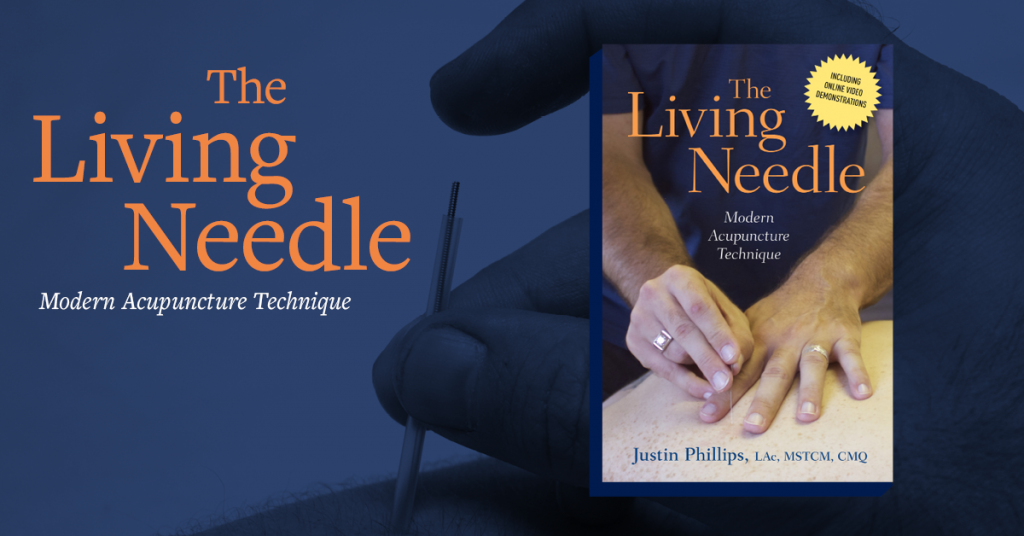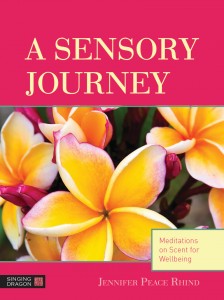I have spent a lot of time developing my technique with an acupuncture needle. First as a practitioner of Traditional Chinese Medicine (TCM) and then as a teacher of needle technique, and now as the author of The Living Needle, a book on the subject. I have a lot of friends who aren’t acupuncturists that ask me if there is anything in all that work for them, other than just getting treatments from me. The answer is a resounding yes! While the needle is certainly the most well-known tool of the TCM practitioner and a very useful one as well, it is not the most important thing at my disposal, or even completely necessary to my trade.
As I discuss in The Living Needle, what is most important is that the body is engaged, and not simply engaged in a passive way, but really meaningfully engaged. This can be accomplished with or without a needle. While it is wonderful to be able to make direct contact with the deeper tissues, the fact that is so often forgotten by providers and patients alike is that all the body’s tissues are interconnected into one vast network. This means that contact with any tissue will necessarily affect all the others. Because of this, as any good massage therapist knows fingers can be just as powerful as needles. This reality is perfectly clear not only in massage, but in trigger point therapy and any number of other manual techniques using nothing more than a finger or an external tool to create pressure.
Am I suggesting that you don’t need to see an acupuncturist? Not necessarily because there is a wealth of diagnostic and other skills we bring to the table, I’m just suggesting you might not be stuck waiting on your appointment to start seeing benefits. You don’t even have to go to a massage or physical therapist to start reaping some rewards (though in a lot of cases you should go see them too). What I’m suggesting more than anything, is that your health and well-being are your business first and there are some simple tools and tricks close to hand that you can start using right now!
All around your house are implements that you can bring to bear on your aches, pains, and even internal medicine issues; from the handle of a spoon, to a toothpick, or a rolling pin, almost anything can be used to apply targeted pressure to the body. And of course you always have fingers. Here are a couple specific things that you can try.
- Digestive Rolling: Get a round implement, a dough roller, stiff cardboard tube, or even the side of a pencil. Find the front edge of your shin bone just under your knee. Place the tool just below the knee and about half an inch outside the edge of your shin bone. It shouldn’t be pressing on the bone, but it should be pretty close. From here, with strong pressure (it shouldn’t be painful, but you should know you’re doing it) roll whatever you’re using down the front of your leg to your ankle. Come back to the start and do it again. Roll down nine times and then do the other leg. This area of the body has a strong effect on the digestion and rolling it like this will bolster stomach function and up-regulate peristalsis. This is a big deal, because with the chronic stress most of us live under our digestive system is underfunctioning most of the time, and chronic underfunction in the digestive system can lead to all sorts of long term illnesses!
- Morning Wake-Up Call: Get that same item you used to roll your shin and put it on the floor. You’re going to sit down and put your foot on it so that the inside edge of your foot, just behind your big toe is pressing against it. Put some pressure on it and roll it back and forth from just behind the big toe to the heel, keeping the pressure focused mostly on the inside edge of the foot. This will again stimulate digestive function, but will also help with adrenal function and cortisol, which can help you feel brighter eyed on those draggy mornings!
- Stress Buster: Feeling stressed? Especially that kind of stress where it feels like someone is squeezing the middle of your chest and refuses to let go? Grab the handle of a spoon or a toothpick if you like a little bit of a sharper sensation, or even just use your finger if you don’t have anything else close to hand. On the underside of your wrist, find the two tendons that run down from your hand. About an inch and a half below the crease of your wrist you’ll find a little tender spot between those two tendons. Press and hold there, making little counter-clockwise circles. On the top of your foot, between the bones behind the big and second toe, slide back toward the top of your foot until you feel where those bones almost meet and then move back toward your toes just a little. You should find another tender spot there where you can repeat the same procedure. While you’re rubbing either of these spots try to slow your breathing down and take nice long breaths. Within a minute or two you should feel a lot better!
The most important thing to remember with any of this is that the real treatment, the fundamental improvement isn’t about the tool that you use, it’s about the meaningful engagement with the body. Most of us live a life where we are largely separated from our bodies as far as awareness goes. The adage I often share with students and patients alike is that most of us don’t know we have feet until we stub our toe. So while you’re doing any of these practices, really get involved. Don’t simply poke away at the body while you make a mental grocery list of other things you have to do. Be aware of the sensations you feel under your fingers and in your tissues. After all, it’s your body, you might as well get to know it!
This more than anything is the real art to medicine, the ability to actively connect with a body and respond to it in the moment. This is also where real health lives. If you want to learn more about engaging the body feel free to pick up The Living Needle: Modern Acupuncture Technique.
Justin Phillips, LAc teaches needle technique and advanced needle technique at AOMA. He also runs a private acupuncture practice in Texas. His new book, The Living Needle: Modern Acupuncture Technique explains the fundamental principles of the art of needle technique for acupuncturists.


